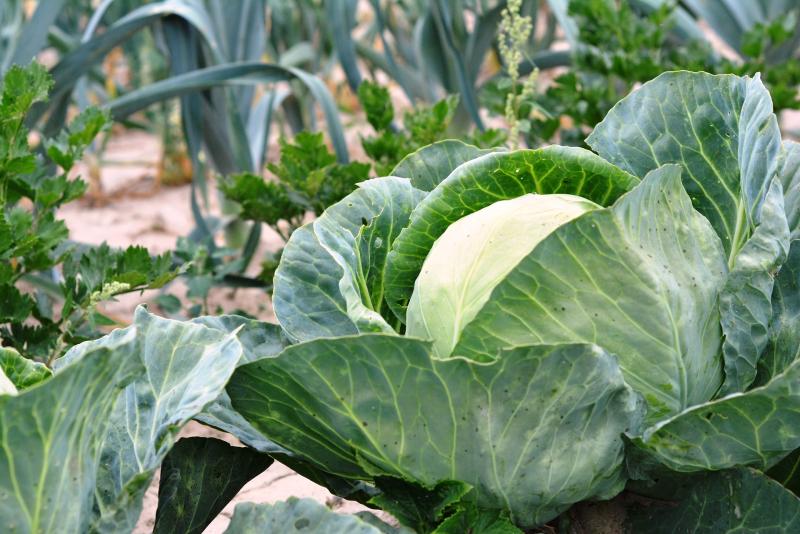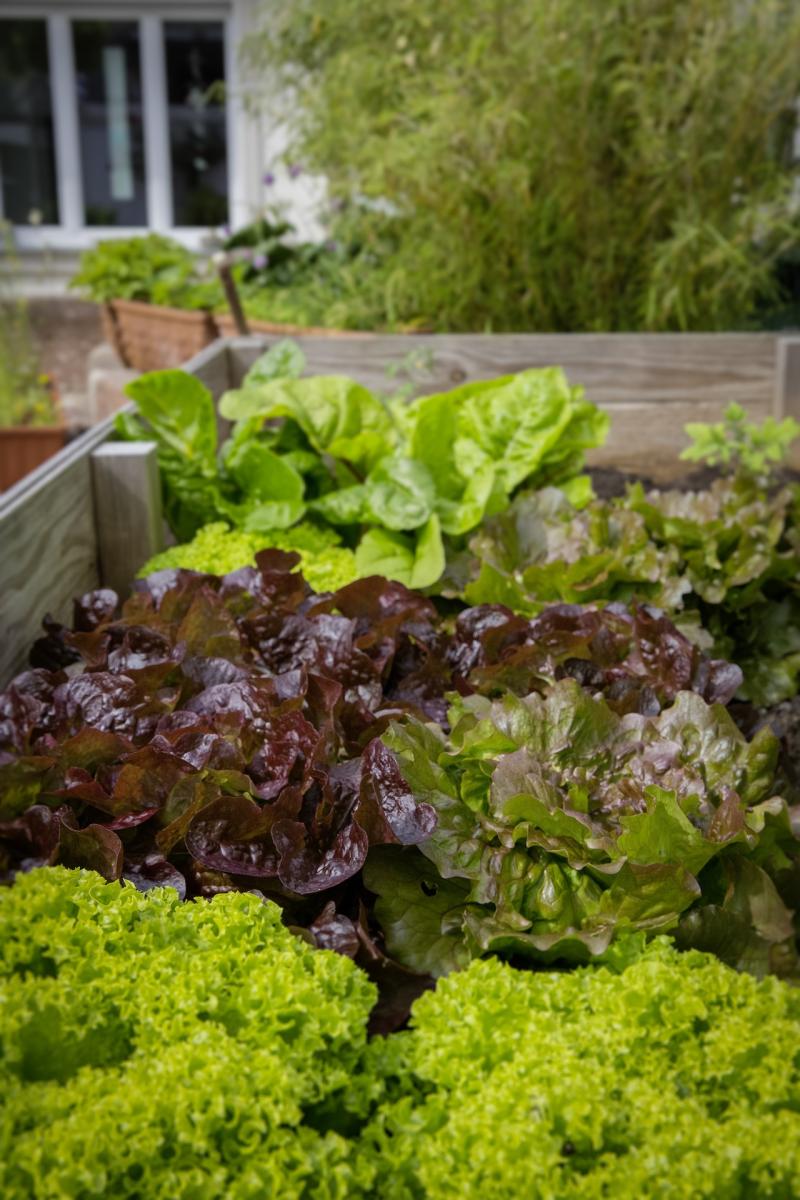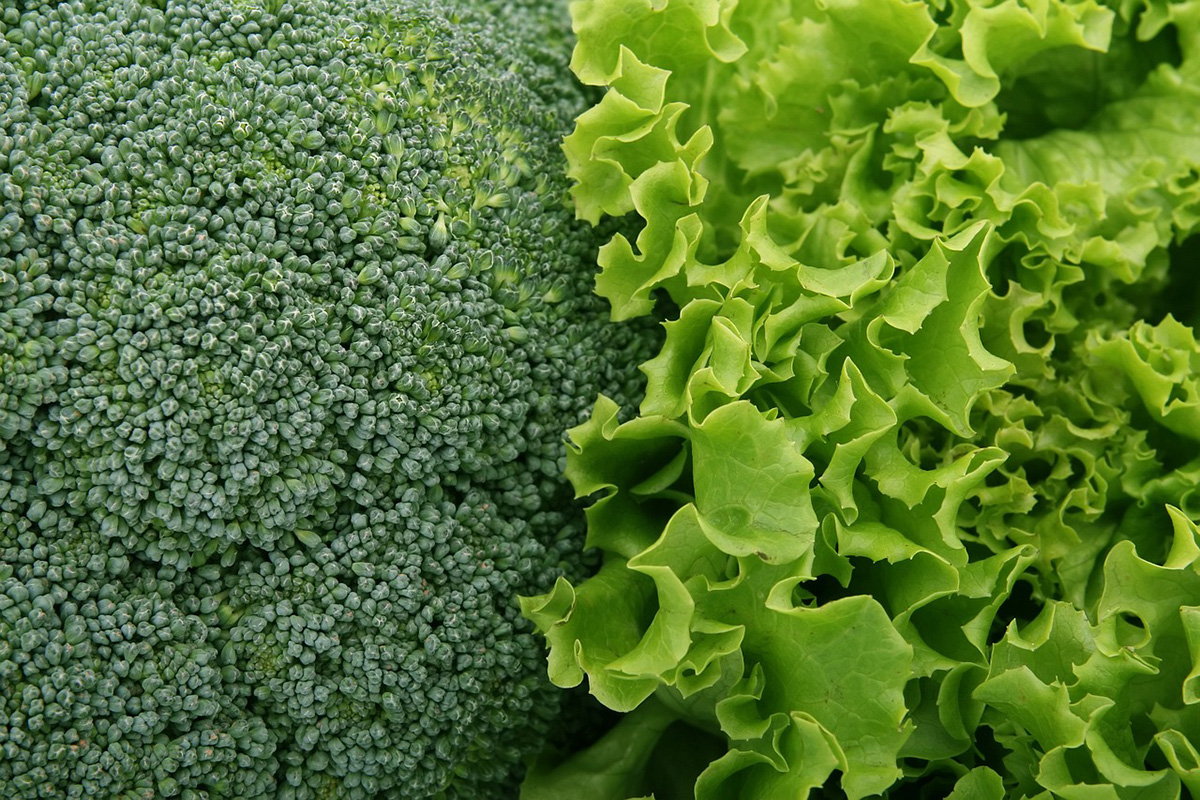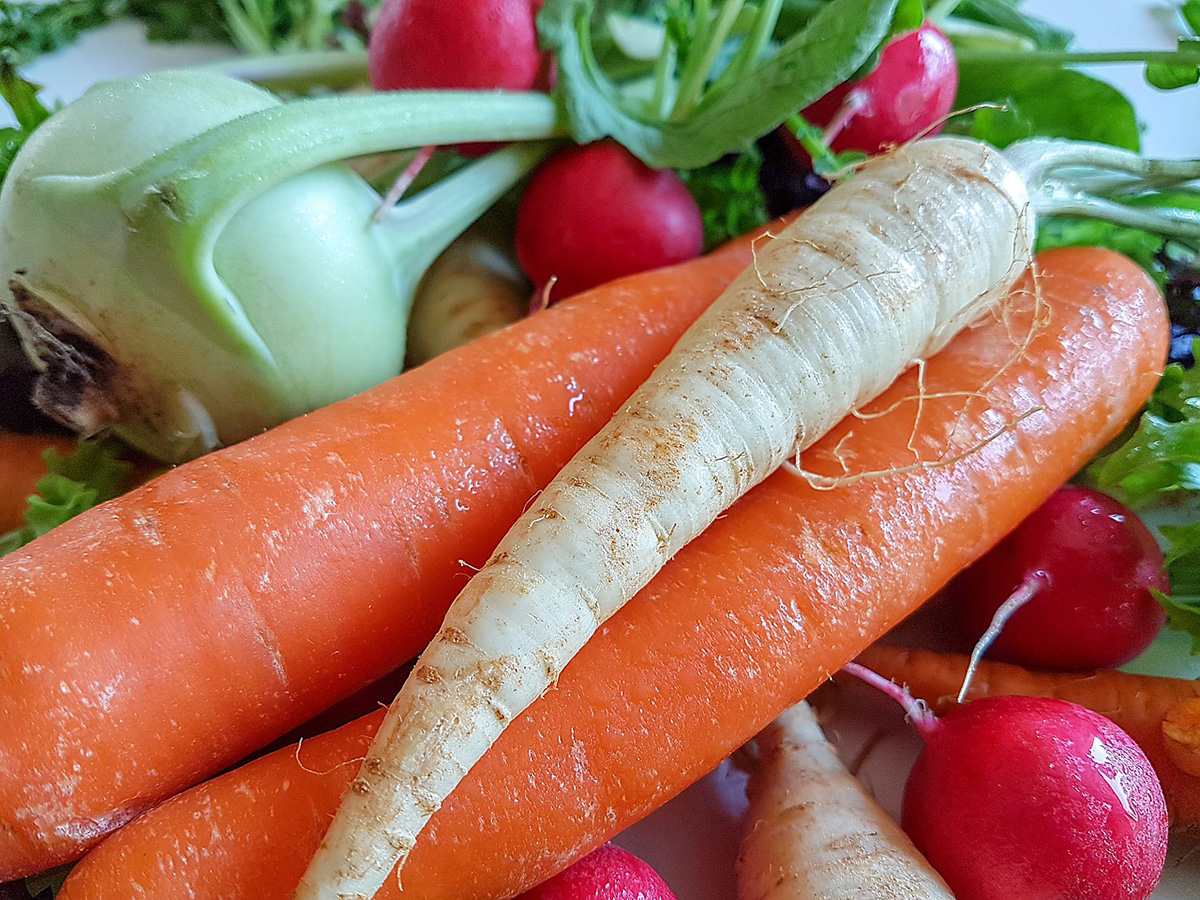
Only have a small space for a vegetable garden this year? There are several ways to practice intensive gardening, making every inch of garden space count.
Square Foot Gardening  When using this intensive gardening technique, the garden is created or divided in a series of 1 foot by 1 foot squares. Each square holds a different vegetable or herb. How many plants are placed in each square depends on 1) the vegetable cultivar chosen, and 2) how far apart they are planted.
When using this intensive gardening technique, the garden is created or divided in a series of 1 foot by 1 foot squares. Each square holds a different vegetable or herb. How many plants are placed in each square depends on 1) the vegetable cultivar chosen, and 2) how far apart they are planted.
In general, seeds or transplants are placed the same distance apart as normal in-row recommendations. But instead of using wider between-row spacing, the spacing is the same in all directions filling the square. Check the publication below “Planning a Home Vegetable Garden” for recommended plant spacing.
One of the advantages of a square foot garden is it’s easy to maintain. Since the amount of space is limited, the time needed to maintain the garden is small, too. But you can still grow large plants, like zucchini, tomatoes or melons, in a square foot garden. Use vertical structures to save ground space and make harvesting easier.
Doublecropping
Also called succession planting, this technique involves growing two or more different vegetable crops in one garden space during the summer season. An early crop is planted and harvested then the area is cleared and replanted for a second harvest. Sometimes there’s even time for a third crop in one season.
 For example, a spring crop of peas, lettuce, cauliflower or broccoli is planted and harvested in early summer. After harvest the ground is cleared and additional fertilizer incorporated in the soil. Then a second crop of warm-season vegetables, such as summer squash, beans, Swiss chard, or carrots, is planted.
For example, a spring crop of peas, lettuce, cauliflower or broccoli is planted and harvested in early summer. After harvest the ground is cleared and additional fertilizer incorporated in the soil. Then a second crop of warm-season vegetables, such as summer squash, beans, Swiss chard, or carrots, is planted.
As another example, 2 or 3 crops of lettuce can be harvested from the same garden space by doublecropping.
Also consider staggered plantings with quick maturing crops like radishes, green onions or lettuce, to avoid being swamped with too much for a few days and then not any for period of time. By simply planting a little seed every 7 to 10 days you can ensure a continuous harvest. As the earlier plantings are harvested, they can be removed and replanted.
Intercropping
Successful intercropping requires combining plants in a logical pattern. Good combinations include mixing:
- quick and slow-maturing vegetables, or
- sheltering cool-loving plants in the shade of larger plants that like hotter temperatures.
To select the right combination of plants to intercrop, think about balancing the benefits of mixing crops and the possible competition between those crops for space, sunlight, nutrients and water.
 One example of intercropping is planting radishes in a row of carrots. The radishes germinate quickly and mark the carrot row, which are slower to germinate. When the carrots finally begin to grow the radishes have already developed leaves and are maturing quickly. After the radishes are harvested, usually in about 25-30 days, extra space is available for the carrots to develop. This results in a natural thinning process that promotes good carrot root growth.
One example of intercropping is planting radishes in a row of carrots. The radishes germinate quickly and mark the carrot row, which are slower to germinate. When the carrots finally begin to grow the radishes have already developed leaves and are maturing quickly. After the radishes are harvested, usually in about 25-30 days, extra space is available for the carrots to develop. This results in a natural thinning process that promotes good carrot root growth.
Here are more ideas for intercropping in your vegetable garden.
- Beets, lettuce, spinach and Swiss chard can be interplanted with broccoli or cauliflower. The larger plants shade the leafy vegetables, which in turn, thrive in the cool, moist soil.
- Tall, slender vegetables, such as onions, can be interplanted with compact vegetables, such as beans and lettuce without being crowded.
- Tall-stemmed broccoli can be interplanted among low growing parsley.
- Quick maturing lettuce can be planted among slow-growing Brussels sprouts. The lettuce will be cleared from the bed by the time the Brussels sprouts have spread to cut of the light.
More Information:
- Planting a Home Vegetable Garden, Iowa State University.
- Selected Vegetable Cultivars for Nebraska, Nebraska Extension